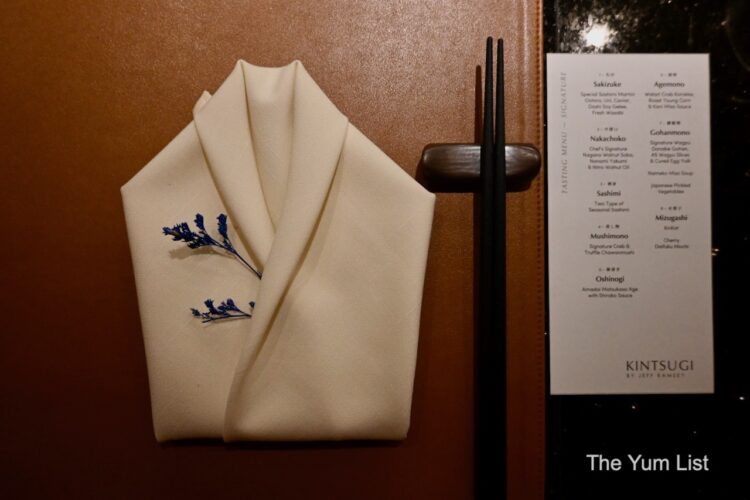Kintsugi Bangkok by Jeff Ramsey
Words: Melissa Cheah
Photos: Monica Tindall
I remember the first time I held it – a porcelain bowl with a delicate flower pattern streaked with gold. We were strolling through the colonnade of machiya-s in Kyoto’s Gion district, and one of the storefronts had several misshapen ceramics with gilded fissures on display. Meaning “to join with gold” or “golden joinery”, Kintsugi is a centuries-old art that was developed in pre-modern Japan.
Rather than throwing it out, pottery that was unintentionally broken is repaired and meticulously restored (the process would take months to complete) – the pieces are glued together, and afterwards, its veins are then traced with lacquer dusted with powdered gold. Extending far beyond aesthetics, it is part of the Japanese philosophy that finds beauty in imperfection – an invitation to remain optimistic and celebrate the flaws of life.
At Kintsugi Bangkok by Jeff Ramsey, the sentiment is used as a metaphor – where time-honoured Kaiseki cuisine is given a modern spin while remaining true to its ancient roots.
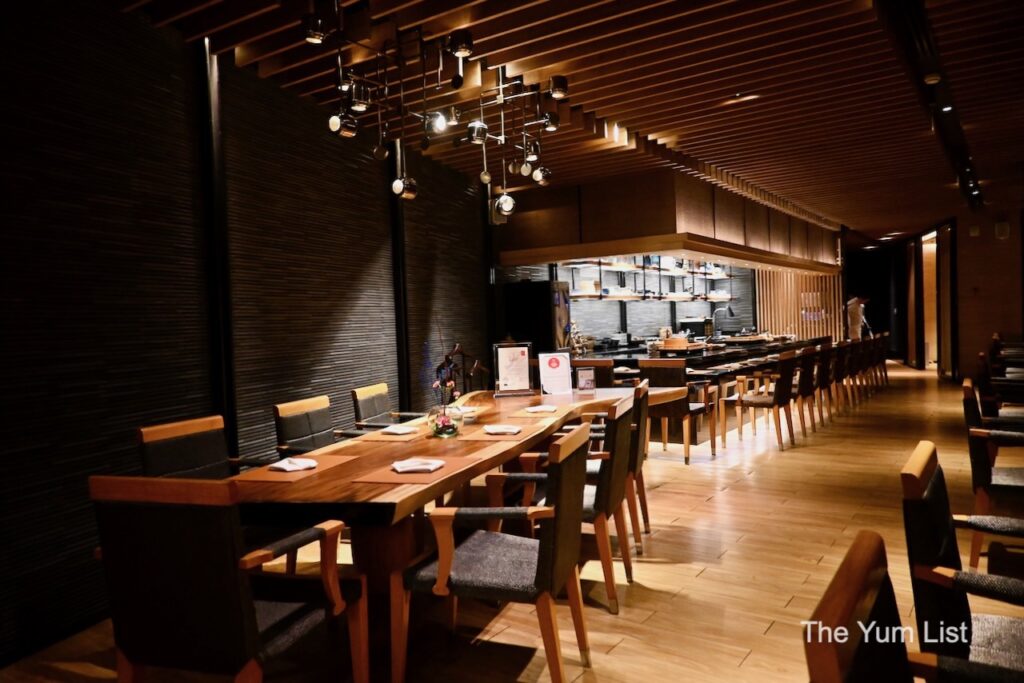
Kintsugi Bangkok by Jeff Ramsey
The brainchild of Chef Jeff Ramsey, the restaurant’s design is sleek, combining the famed Japanese minimalist aesthetic with rustic elements in the furnishings, clusters of hanging lamps, and strong vertical lines in the semi-transparent screens. For the best experience, opt to sit at the counter, where you can watch Chef Ramsey and his team in action throughout the courses.
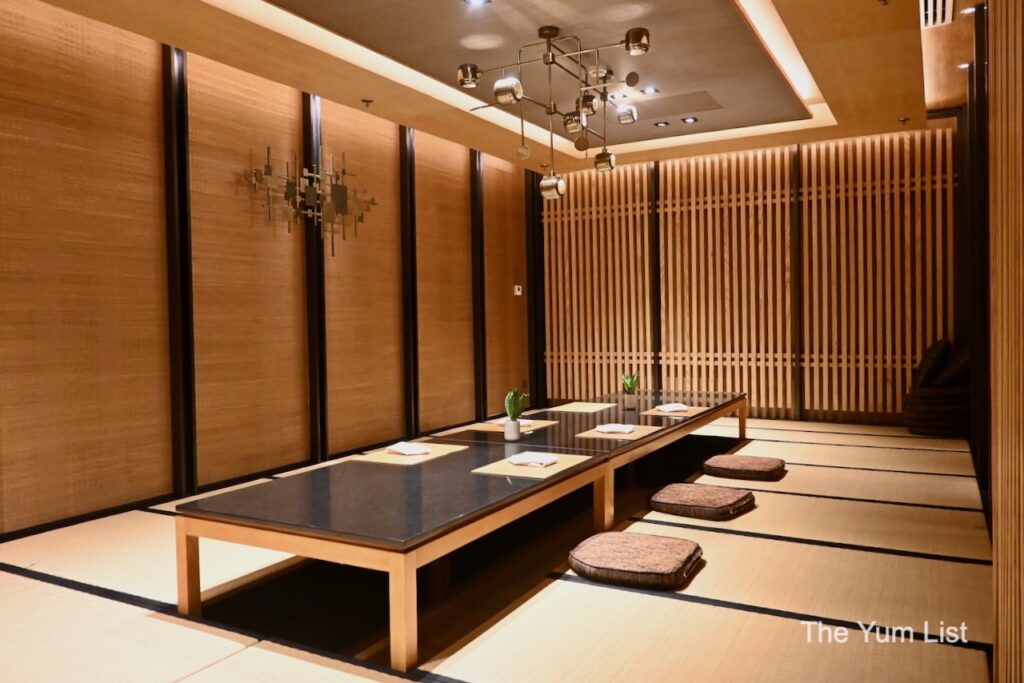
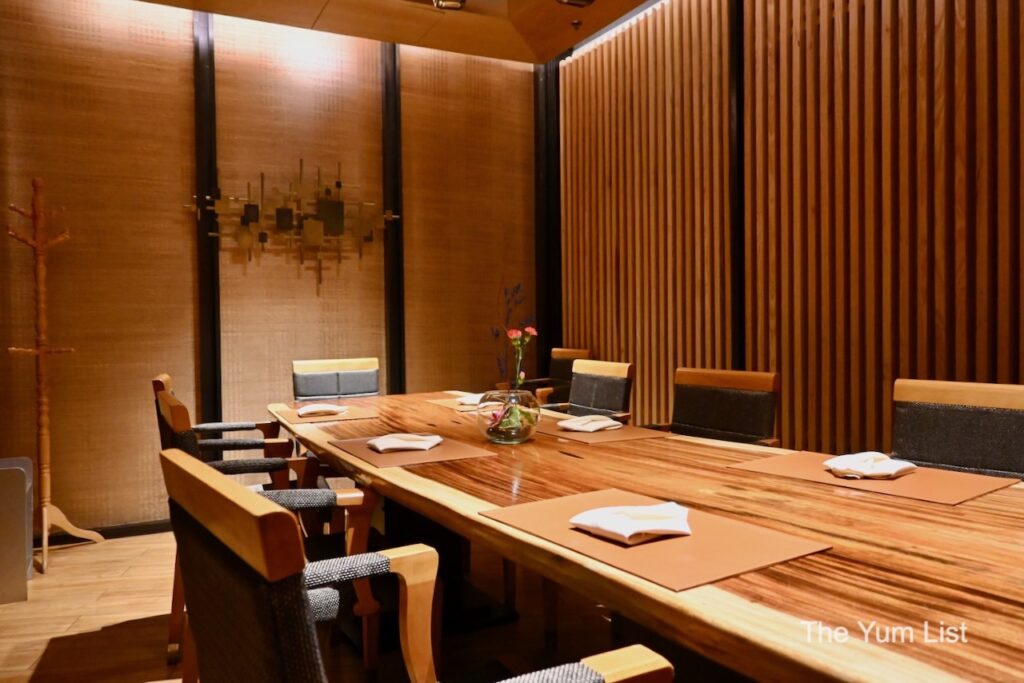
Cocktails & Concoctions
A refreshing concoction, Athenee Hugo No. 2 was a medley of Lillet Blanc, sparkling wine, and elderflower with local twists of lemongrass and kaffir lime. Leaning more towards the sweeter side, the Silk Road Canton Mule was a composition of Absolut Vodka-infused cardamom, lychee, fresh mint, citrus and coconut, with an invigorating finish, thanks to the addition of ginger. The Jeff, a nod to the Japanese-American titular chef, was umami in every sip with nori-infused beefeater gin, passionfruit, miso syrup, yuzu, and wasabi espuma.
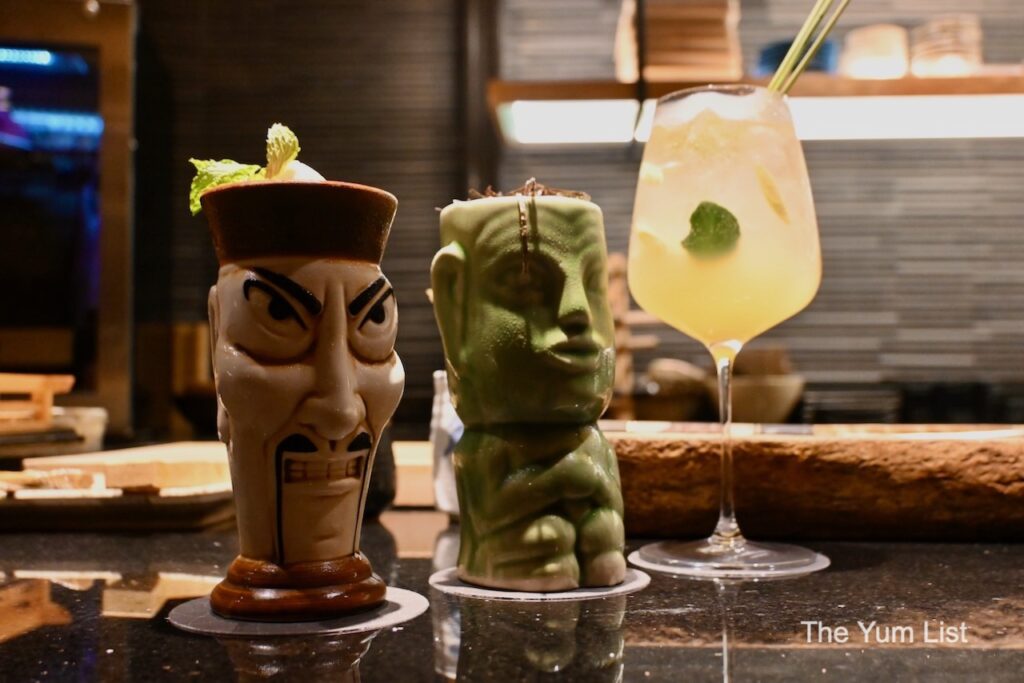
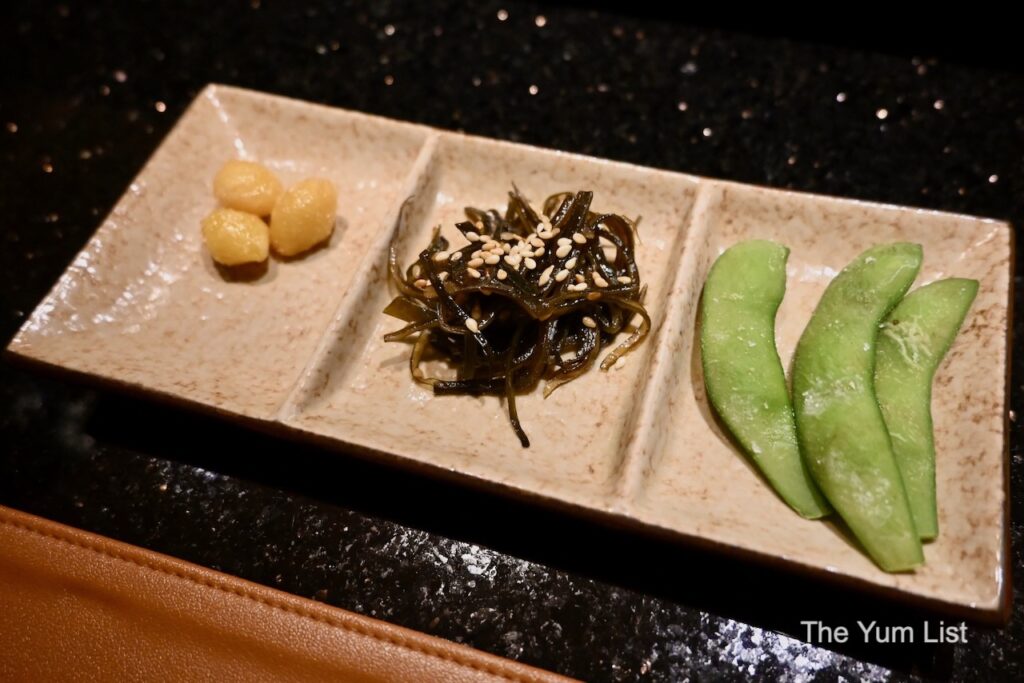
Modern Progressive Kaiseki
While Bangkok is rife with izakaya and omakase options, the art of kaiseki is few and far between. In the simplest of terms, kaiseki refers to a multi-course Japanese meal. However, depending on the kanji used to write the word, it can be further defined as either a simple multi-dish meal served as a prelude before the tea ceremonies or an elaborate meal accompanied with sake and ending with a simple tea service.
The embodiment of “omotenashi” (translates to wholehearted hospitality), a kaiseki’s core purpose is to convey respect, making guests feel special and at ease. Each course is defined by a particular cooking method, and typical courses may include:
Sakizuke: An iteration of amuse bouche or starter, the first course usually consists of a pickled item to whet the diner’s appetite.
Hassun: An ode to the seasonality of the meal
Tsukuri: A sashimi course
Yakimono: A grilled course
Takiawase: A simmered dish
Shokuji: A rice course (gohan), served with miso soup and pickles
Mizumono: A sweet platter of Japanese desserts or fruits
Kintsugi Bangkok by Jeff Ramsey Menu
SAKIZUKE | Special Sashimi Martini
Created and curated based on seasonal produce, the kaiseki experience at Kintsugi began with a Sashimi Martini. Cubed otoro and briny uni are complemented by dashi soy gelee and spiked with fresh wasabi. To finish off, the first course was topped off with caviar, before it was placed in front of us. Easy on the eyes and pleasing to the palate, this was an excellent precursor to the rest of the courses.
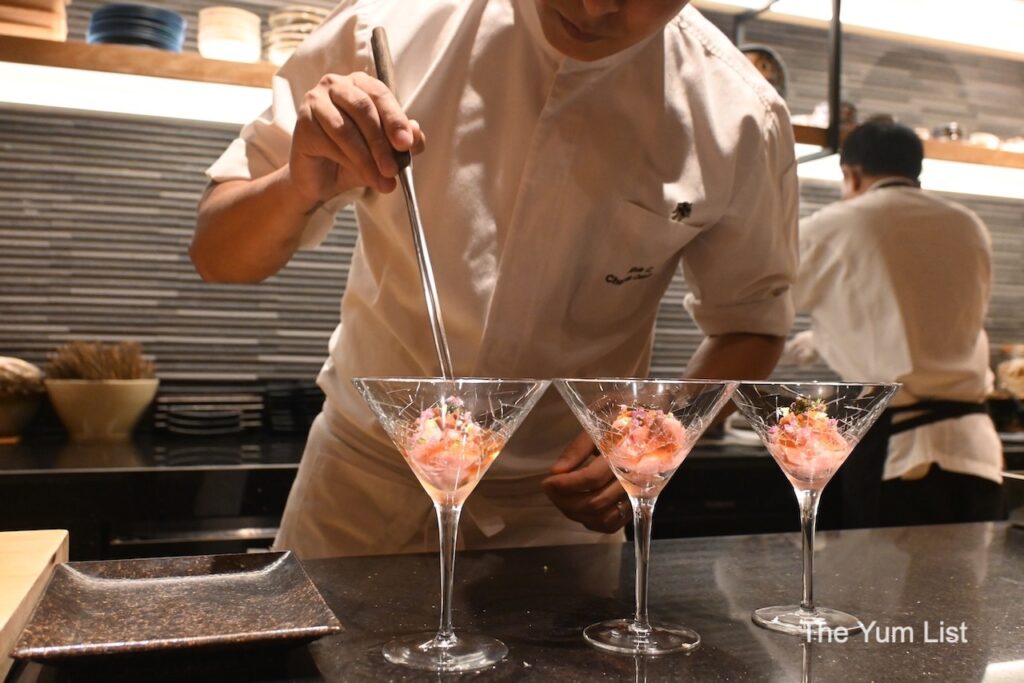
NAKACHOKO | Chef’s Signature Walnut Soba
A regional delight from the Nagano Prefecture, Chef Ramsey’s signature features Nanami Yakumi, a blend of seven Japanese herbs, roots and seeds. Accompanying the curated mix, a plate of soba slid right next to it. At the corner of my eyes, Chef Ramsey’s right-hand man, Chef Alvin Chew, whips up a theatric show made of nitro walnut oil and liquid nitrogen. Awaiting its crowning glory, the soba was then topped with the smoky compound. Theatrics aside, the signature dish was impossible to fault – each strand of the chewy, cold buckwheat noodles was coated with a glorious nutty paste and garnished with scallions.
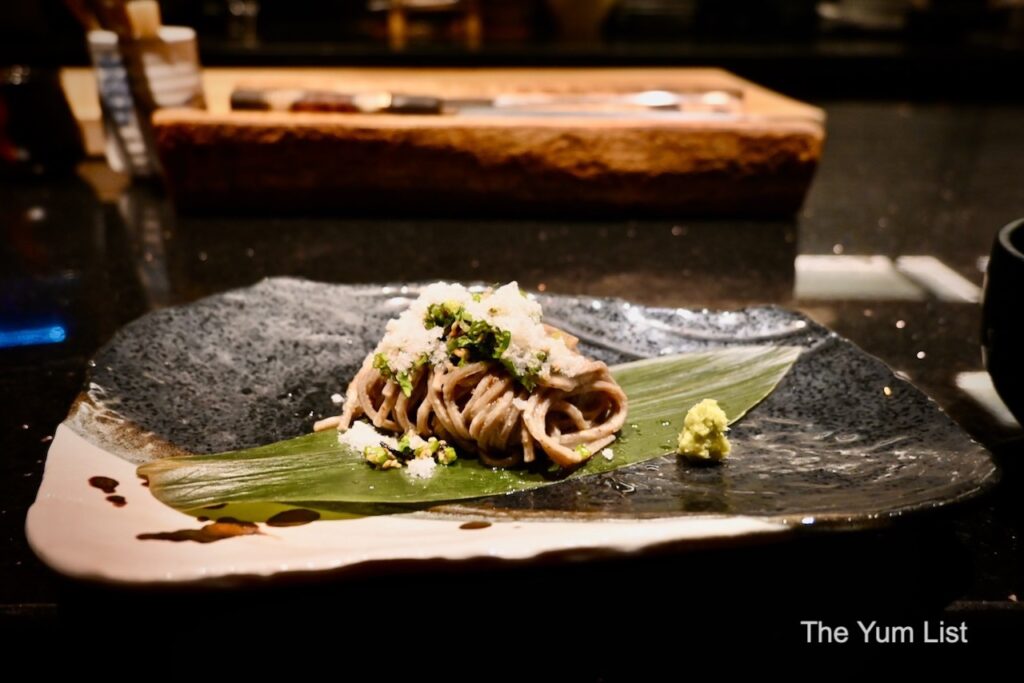
SASHIMI | Seasonal Sashimi (Akami & Shima Aji)
Developed over 350 years ago, Ikejime is a Japanese fish preparation method hailed for resulting in superior quality. After being cleaned, gutted, and scaled, the prized catch is then dry-aged in a moisture and temperature-controlled refrigeration system for days or weeks, depending on the type and size. The result? Deeper flavour, firmer flesh, more tender meat. Dry-aged for two weeks, the flavour of the toro was intensified, sans the fishy scent. Complemented by Shima Aji (amberjack), the duo were a delight to partake in.
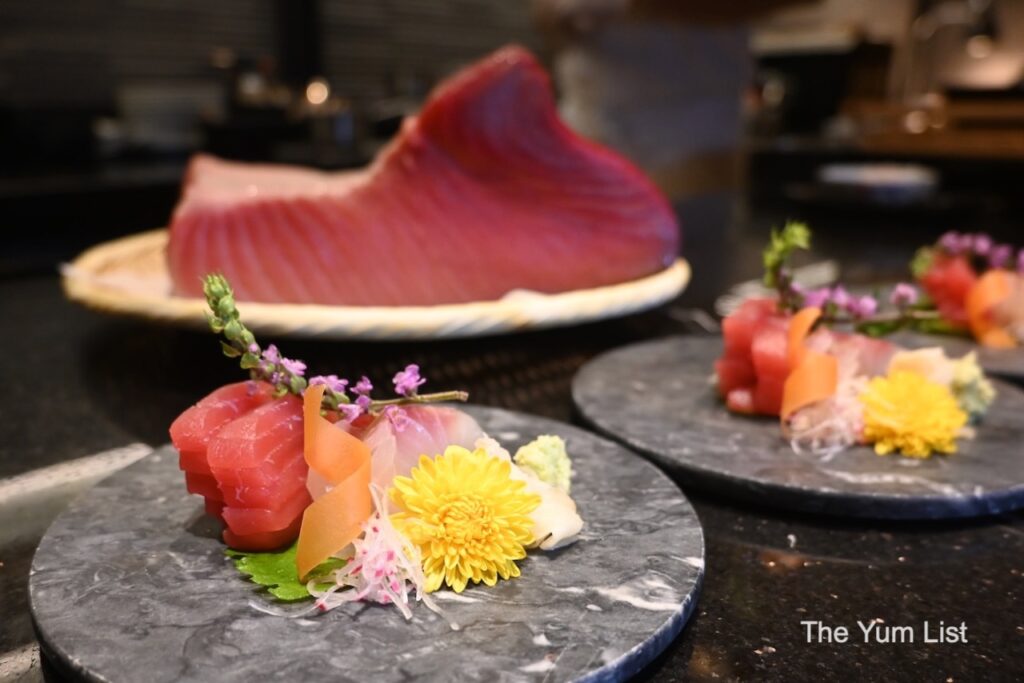
MUSHIMONO | Signature Crab & Truffle Chawanmushi
A customary repertoire in any Japanese cuisine, the signature chawanmushi was simmered on low temperature, which resulted in the smoothest, silkiest texture. The egg custard was steeped in ankake sauce (a dashi broth), accented with truffle paste and Alaskan King Crab. A classic for a reason, and ever so classy.
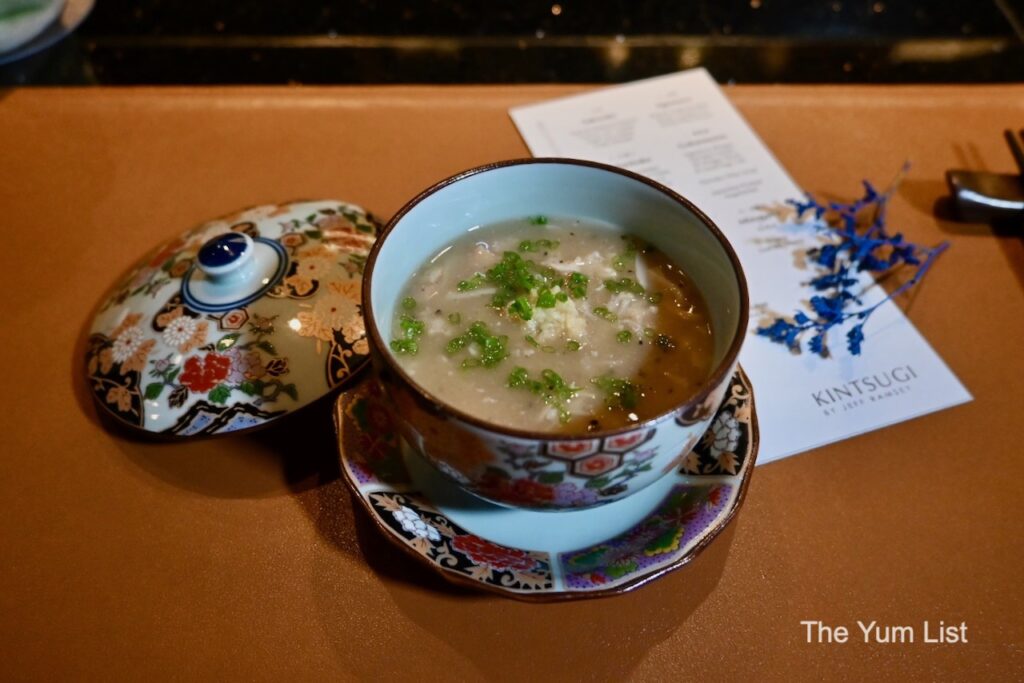
OSHINOGI | Amadai Matsukasa Aged with Shirako Sauce
Elegantly perched atop a tangy apricot sauce dotted with emerald green shiso oil, the Amadai (tilefish) was grilled (with charcoal) to perfection. When done right, the scales would curl and crunch up – a melange of textures and flavours with every bite.
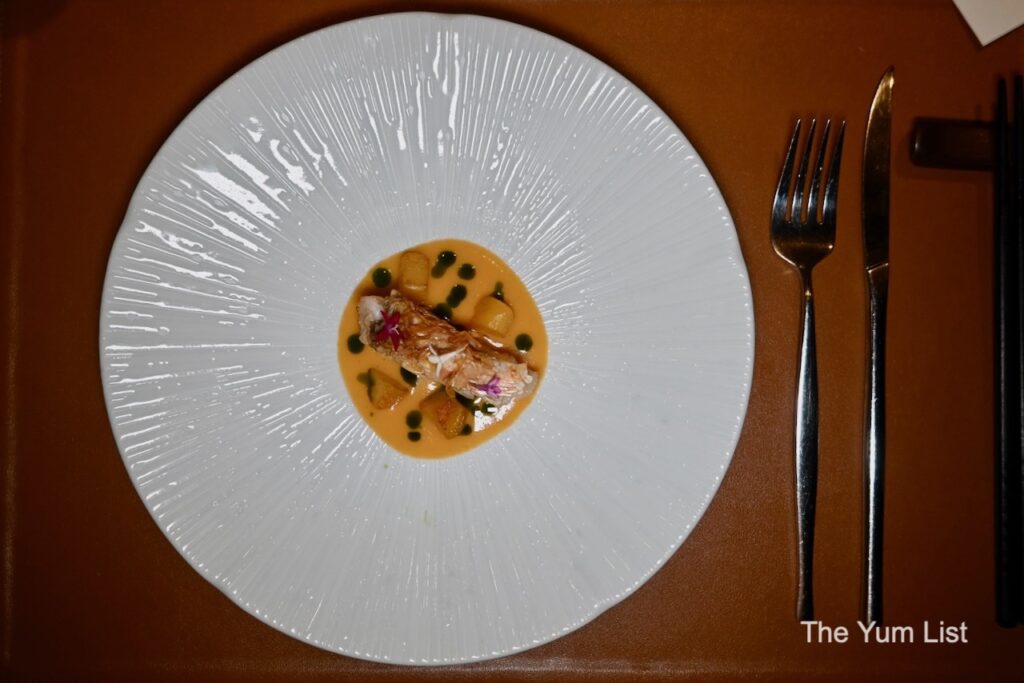
AGEMONO | Watari Crab Korokke, Roast Young Corn & Kani Miso Sauce
Brimming with water crab, the korokke’s (croquette) sauce was composed of lobster, miso, crab, and uni paste. Baby corn roasted with kombu butter leaned gracefully on the korokke. The exterior was crispy perfection, but it was the kani miso sauce that stole the show. I would have happily mopped up every trace of the umami-laden sauce.
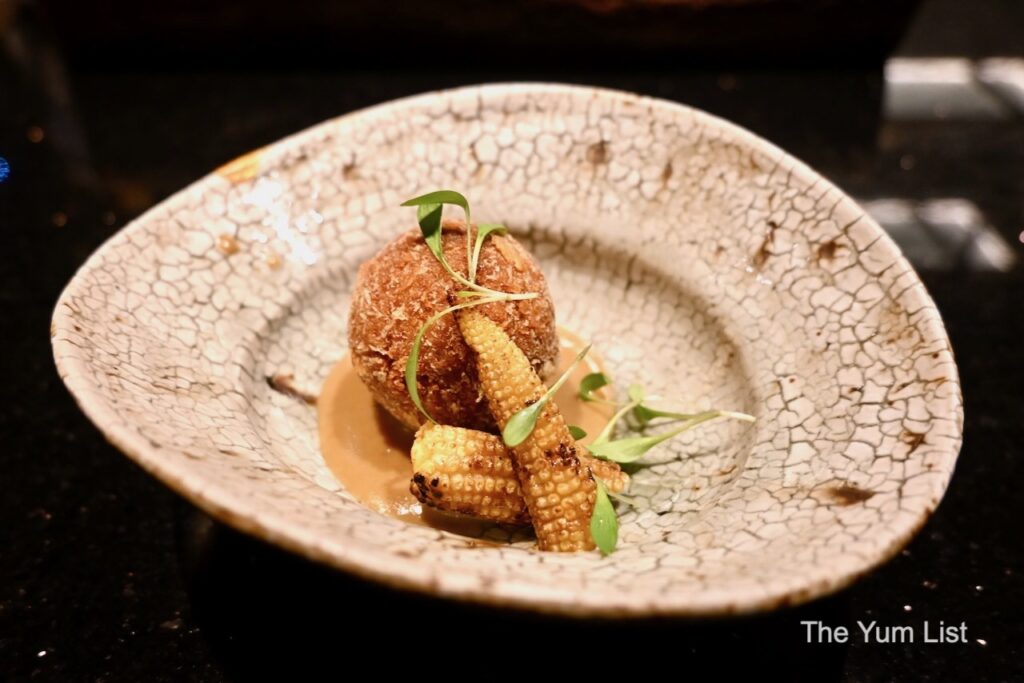
GOHANMONO | Signature Wagyu Donabe Gohan, Seared A5 Wagyu Slices, Cured Egg Yolk
House-pickled Japanese vegetables in a deluge of Japanese rice vinegar and kombu. Tender A5 wagyu slices are placed atop beads of Japanese rice, soaking up the depth of flavour. For an even more luxe spoonful, a cured egg yolk was gently jiggly on the donabe; when stirred, lending a coat of richness to the grains of rice. Served alongside a miso soup with Nameko and honey cup mushrooms, this was incredibly indulgent. Savour it slowly; the only way to do this course justice.
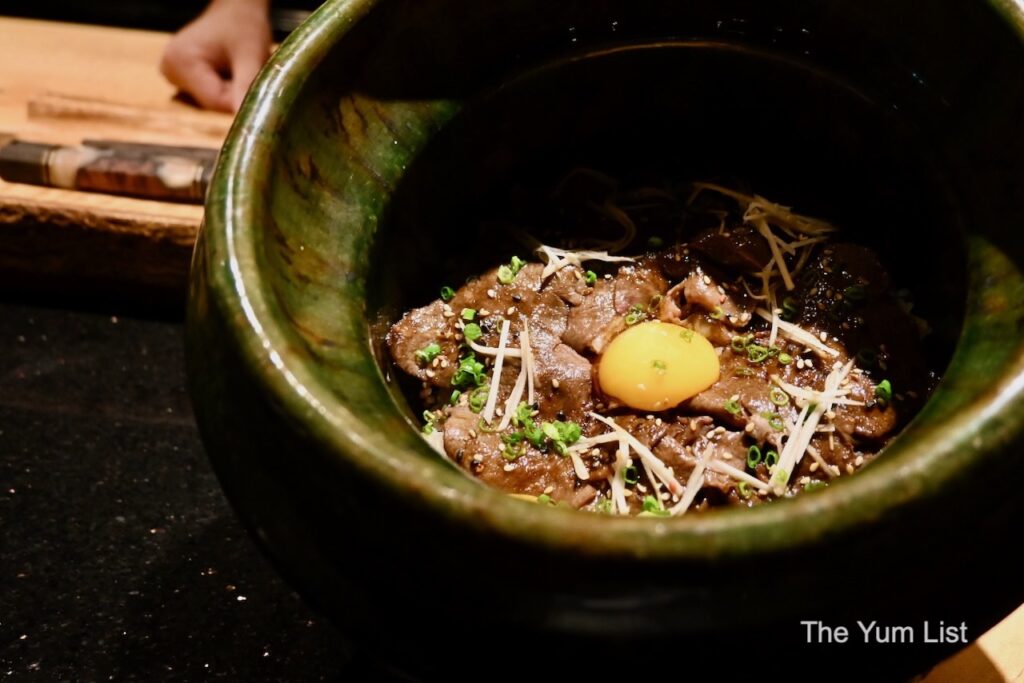
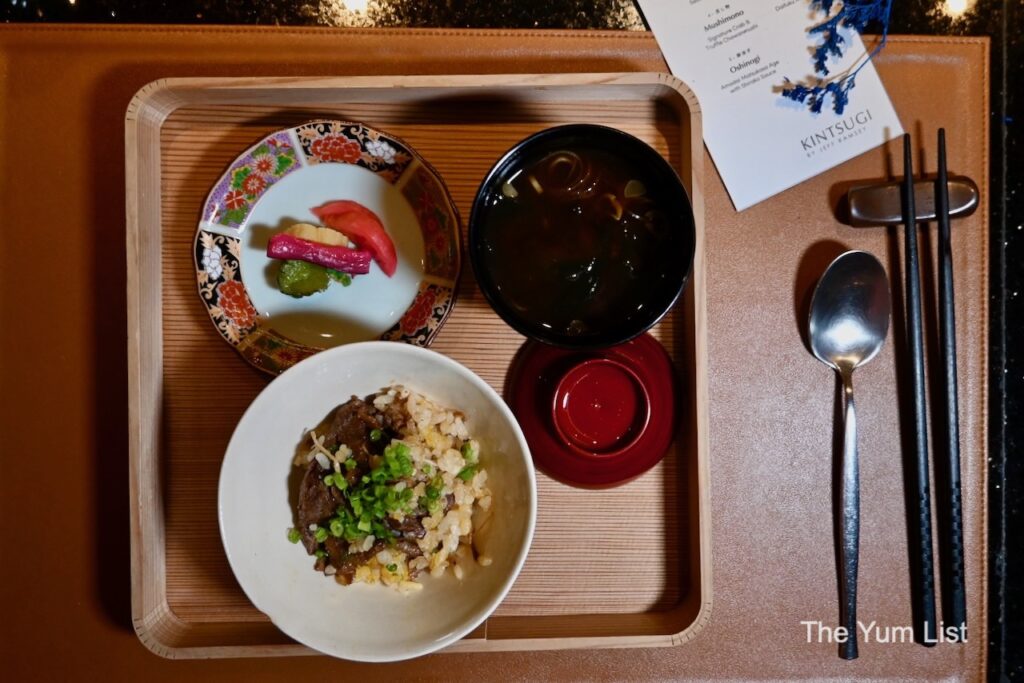
MIZUGASHI | Kin Kat & Cherry Daifuku Mochi
Chef Ramsey’s signature dessert was a playful ode to the humble Kit Kat bar. Cheekily named Kin Kat, monako wafers sandwich creamy foie gras and cognac in a dark chocolate shell. Right after, this season’s cherries were wrapped in a tender mochi skin, right before us. The perfect end to a beautiful meal.
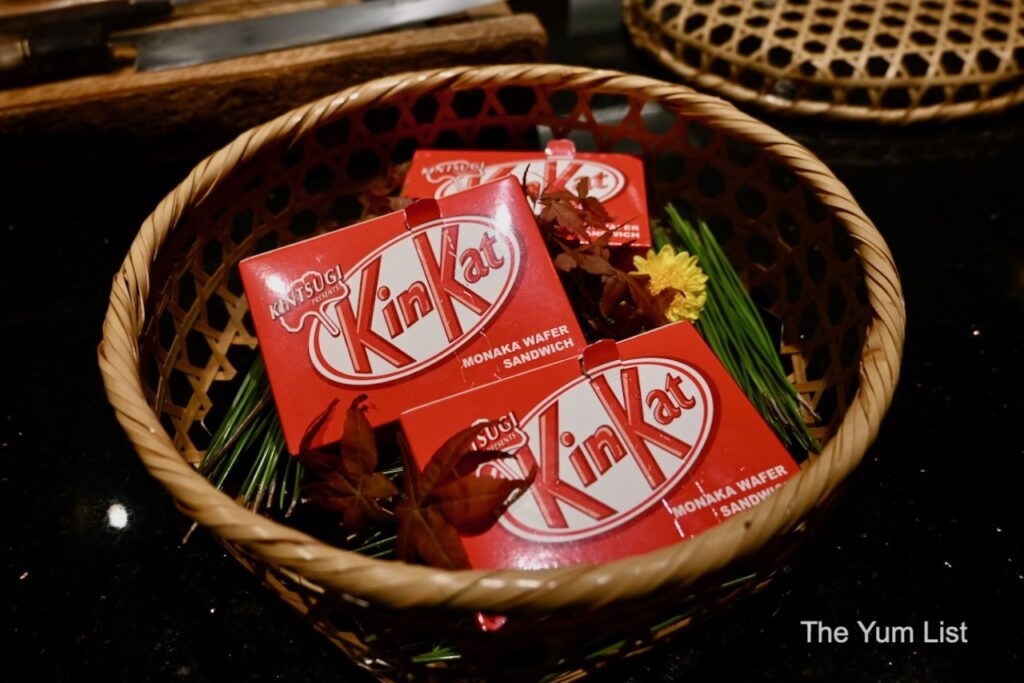
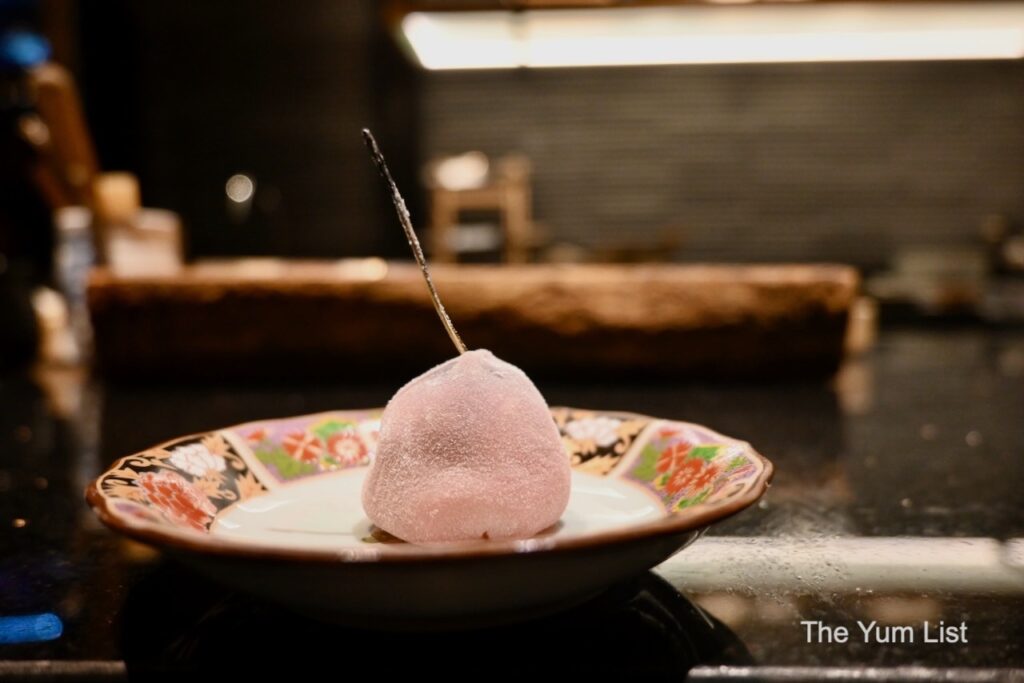
Reasons to visit Kintsugi Bangkok by Jeff Ramsey: a high-quality food experience with exceptional service in a stylish setting.
Kintsugi Bangkok by Jeff Ramsey
The Athenee Hotel, A Luxury Collection Hotel, Bangkok
61 Wireless Road (Witthayu), Lumphini, Pathumwan
10330, Bangkok, Thailand
+66 2 650 8800
www.kintsugibangkok.com
[email protected]
Kintsugi Bangkok Opening Hours
Lunch: 11:30am – 2:30pm (Daily)
Dinner: 6:00pm – 10:00pm (Daily)
Find more recommendations for gourmet travel in Thailand here and stay up-to-date with our latest gourmet travel finds here and here.

